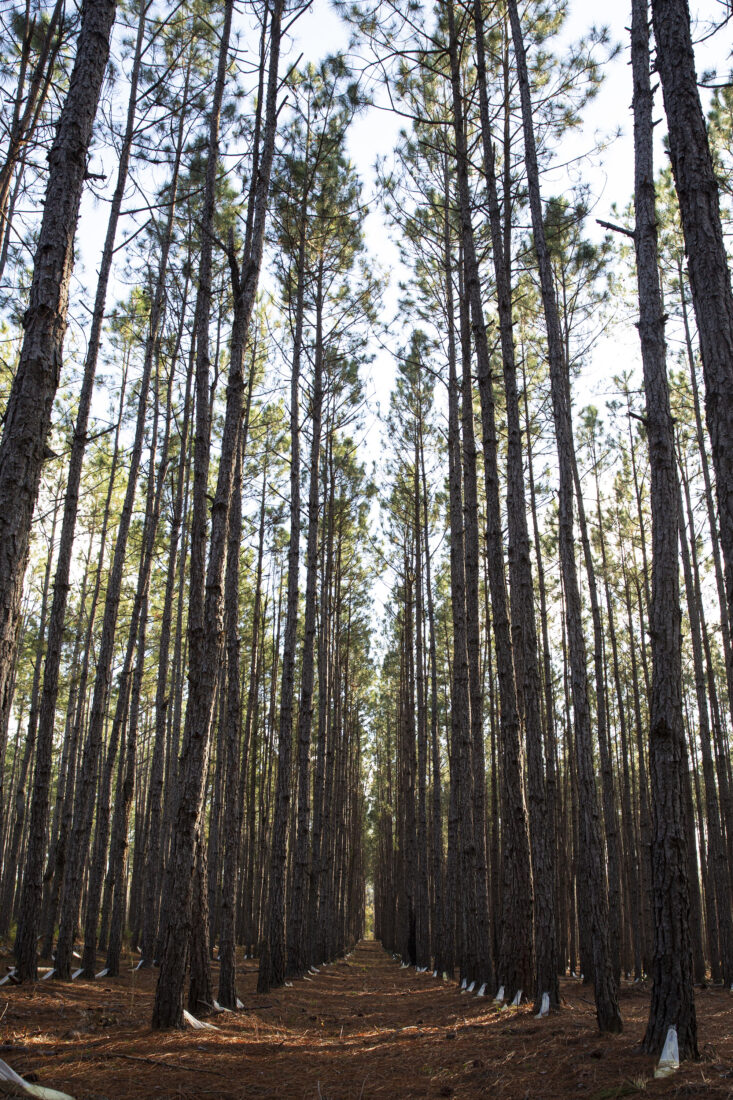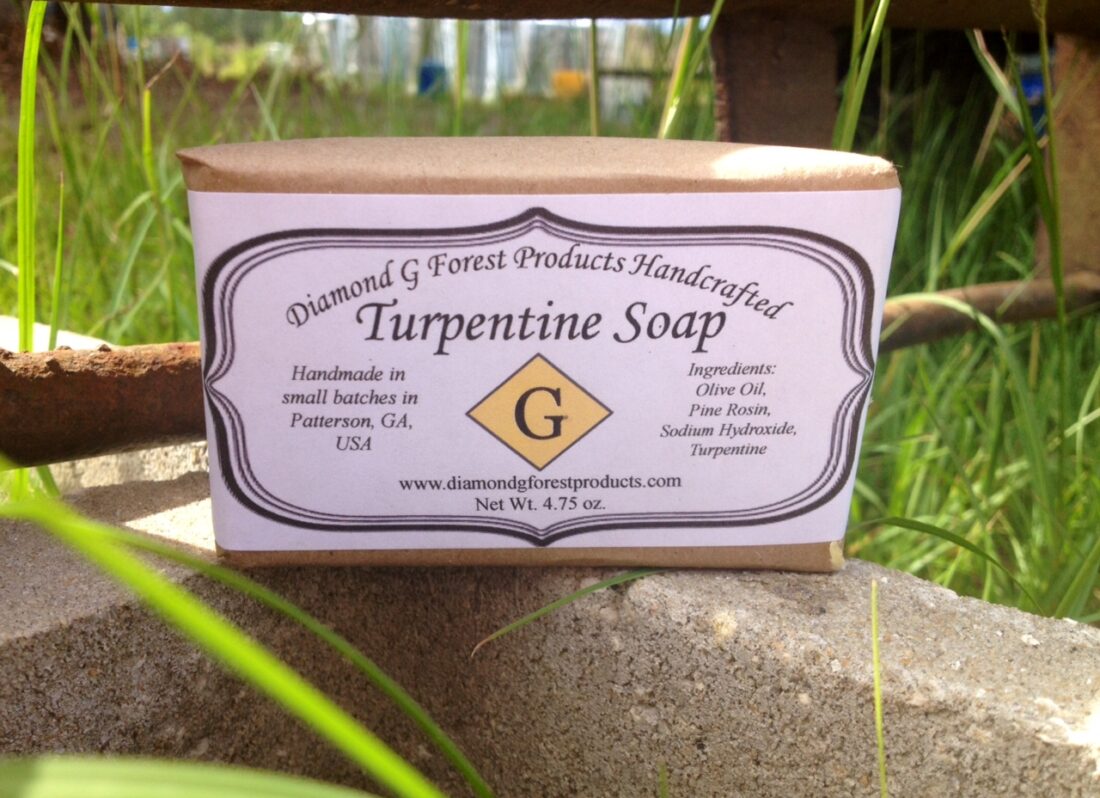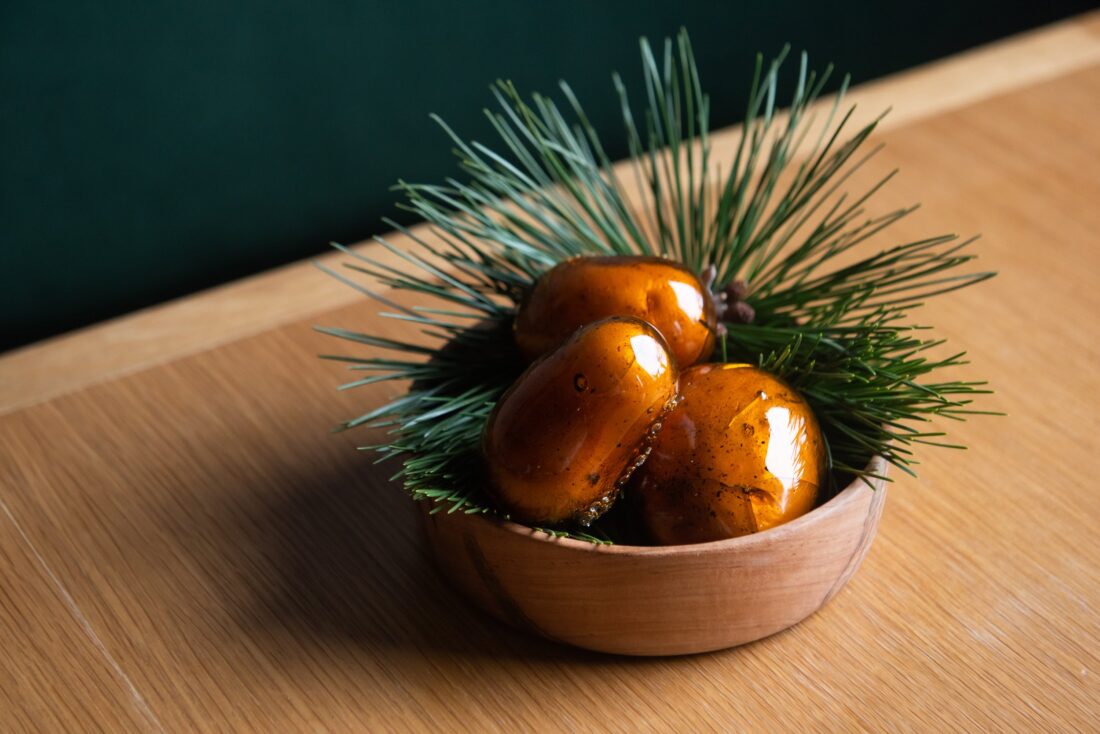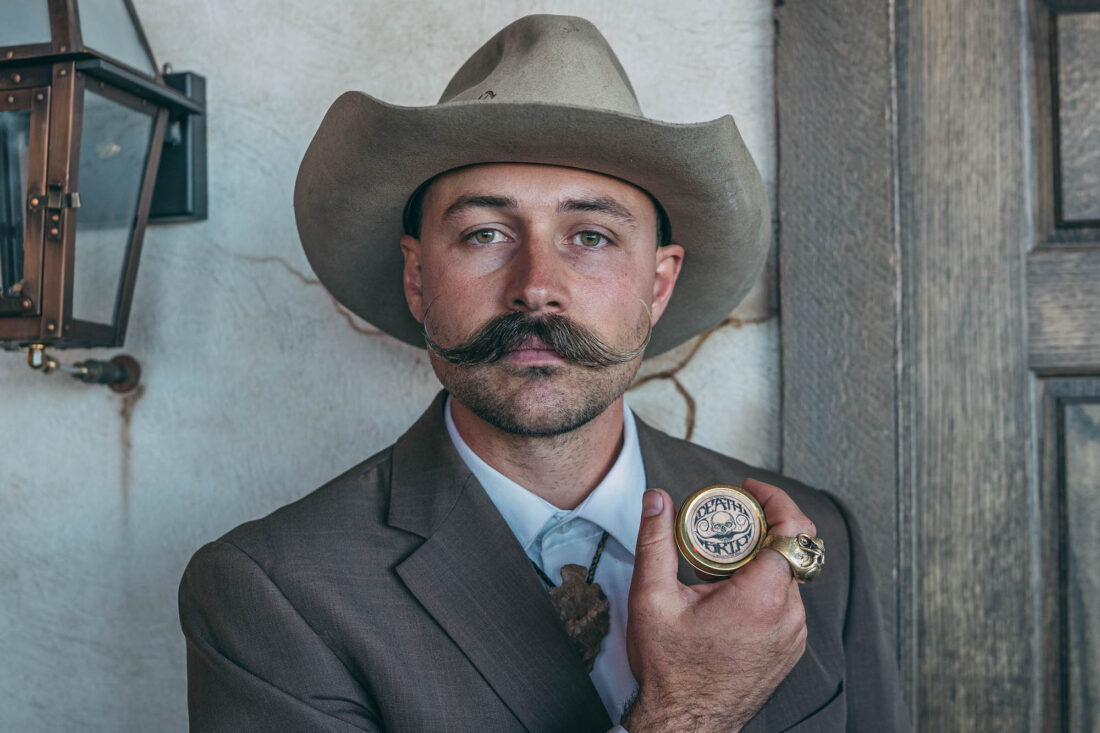The last thing you’d expect Chip Griner to call himself is a snob.
Turning off Highway 32 just a few miles from downtown Patterson, Georgia, the red dirt road that leads to Griner’s business headquarters is lined with cotton, giant oaks, and rows of slash pine—plus a fine patch of mustard greens. The office, a no-nonsense mobile unit, sits next to an open-air machine shop and a 1,400-gallon still with more of a char than a patina.
Griner and his wife, Julie, own Diamond G Forest Products, America’s premier, if not only, producer of gum turpentine and rosin. “We’re trying to make turpentine and rosin for people who know the difference between a good one and a bad one,” Griner says. “Really, I guess we’d be the turpentine snobs.”
Those discriminating tastes, however, have paid off. After more than a decade in the business, the Griners lead a niche market selling American-made, sustainable, additive-free, historically accurate turpentine and rosin. That’s why their products can be found on Major League Baseball pitching mounds, a Nashville tasting menu, celebrity Instagram posts, and, ahem, the nether regions of some of Atlanta’s best-groomed ladies and gentlemen.

The Secret of South Georgia
For nearly a century, turpentine was the business of South Georgia’s piney woods. Workers would hack and slash into longleaf pines, and sticky oleoresin, the trees’ natural defense system, seeped from the trunks. Men stretched across hundreds of acres collecting gum and scraping it into barrels, which they’d then haul in mule-driven wagons to backwoods stills, where heat, pressure, and steam would separate the gum into turpentine and rosin.
In 1924, Griner’s great-grandfather, O.W. Raulerson, bought timberland about six miles from where Diamond G now sits and ran a turpentine still through the 1950s. In fact, the Griners recently found paperwork for the loan that secured the land, equipment, and two mules named Aida and Jerry. It was cosigned by the grandfather of another Diamond G partner, R.D. “Dedi” Thomas Jr., who’s also the mayor of Patterson. “We didn’t know it,” Griner says. “But our folks have been working together for a long time.”
Turpentine, along with rustic tar and pitch, were first used in shipbuilding and maintenance, giving rise to a global naval stores industry. Turpentine would then light homes across America and serve as paint thinner, insecticide, disinfectant, flavoring agent, perfume additive, and homegrown medicine. Rosin, though initially regarded as a waste byproduct, became critical for industrial paper production and got added to adhesives, chewing gum, gun powder, oil paints, and polyester.

Mining the South’s pine reserves transformed the region. Camps and towns sprung up; landowners amassed wealth. Old growth longleaf forests died out from intensive tapping, replaced by today’s uniform rows of slash pines. Railroads and roads were built to transport naval stores from the woods to ports in Savannah and Jacksonville. The modern forestry industry was born.
But the labor-intensive industry was doomed to collapse. Turpentining depended on a large, skilled workforce. Before emancipation, that meant enslaved workers. After the Civil War and into the 1950s, the industry held down labor costs through Jim Crow laws and industry exemptions from Social Security, minimum wage, and workers’ comp regulations. Once wages started to outpace profits, gum turpentining moved from the American South to China, India, and South America, and a cheaper industrial source of turpentine and rosin emerged from the process of converting wood pulp to paper.
A More Sustainable Way
By the time Griner was born in the early 1970s, only traces of the industry whispered from the pines. Still, he managed to make a living from the woods. In addition to farming, Griner operated a lumber mill and worked for the Georgia Forestry Commission. He also nurtured a quixotic little dream of tapping trees and distilling turpentine.
“When he was eighteen years old, he just said to me, ‘One day, I’m gonna do what my great-granddad did and make a living on the land and the trees,’” recalls Julie, who started dating Griner in high school. “I was just starry-eyed and thought that was so wonderful. Little did I know how hot and sticky it was going to be.”
Griner and his father, Wade, started experimenting with gum distillation using a Coca-Cola can and a Bunsen burner, then through trial and error graduated to a small homemade still. Folks in town chuckled when they heard Griner talk about the project, but as he says today, “they ain’t laughing no more.”
Turpentining, according to Griner, is a simple business. It relies on old technology, modernized ever so slightly at Diamond G. Rather than cutting large V-shaped notches into pine trees and collecting gum in an open cup, the Griners employ the minimally invasive borehole method invented by University of Florida scientists in the 1990s. Each spring, Griner’s crew drills a hole into the base of 100,000 or so trees and attaches a plastic bag to each. In Georgia’s hottest months of June, July, and August, gum runs into the bags, which the team collects well into the winter. Wade designed and built their current stainless steel still—really a modified liquor still with added steam injection to make the process safer.
A Market Emerges
At first, Diamond G sold all of their turpentine and rosin to Pinova, a producer of refined wood rosin and natural wood terpenes in Brunswick, Georgia. Pinova buys most of its gum turpentine and rosin from China, where labor costs are low, the land plentiful, and regulations few. The arrangement worked for a while, but the company paid Diamond G the same rate as its Chinese counterparts, despite a gulf in quality.
The Griners’ daughters convinced their parents to put one-pound bags of Diamond G rosin on eBay. Online sales immediately, unexpectedly picked up. They DIY-ed a website. “One day, Mr. Dedi walked in and said, ‘Y’all heard about Amazon?’ And just went from there,” says Griner, whose rosin now commands as much as $20 a pound and whose turpentine goes for a little more than $2.50 an ounce.
Despite the unprecedented cost and an annual marketing budget of pretty much nothing, folks kept finding and buying from Diamond G. The inventors of Bee’s Wrap and Nerdwax were early customers. Major League Baseball’s St. Louis Cardinals source their rosin, used to improve pitchers’ grip, from Diamond G. The actress Tiffany Haddish even revealed she uses Diamond G’s homemade turpentine soap to manage eczema.

Thanks to them and a community of niche devotees, following turpentine and rosin as it flows from Pierce County out into the world has become a lesson in American obscura.
Nashville chef Sean Brock served rosin potatoes on the opening menu of his restaurant Audrey. To make the dish, Brock boiled potatoes in Diamond G rosin, let them cool until the rosin hardened, cracked them open, scooped out the flesh, and dressed the potato with buttermilk and trout roe. It’s the tasting menu version of a dish once considered a Southern steakhouse staple.

Brock loves the pine aroma rosin imparts to food, and he’s experimented with rosin-cooked asparagus. “You’re really able to cook anything in rosin,” he says. “It’s like a shield.” He’s even aged squab and steaks in the stuff, taking advantage of rosin’s antimicrobial properties.
Drag racers rely on rosin to prevent their tires from spinning out. Early on in the sport, race teams scattered powdered rosin on the track, but now it’s more common to use liquid traction compound in which rosin gets dissolved into alcohol or ketone. Diamond G supplies rosin for at least one drag-racing operation (one that’s intent on keeping its sourcing a secret).
Joe Robson produces custom violin varnishes for string instrument makers around the world, and his New York–based Violin Varnish Ltd. is one of about three such companies in the United States. Early in his career, Robson found that modern varnish-making materials—linseed oil, turpentine, resins, etc.—bore little chemical resemblance to the original products of the same name. “The performance of the old materials is superior,” he says.
For years Robson imported turpentine from the South of France. Other varnish makers used petroleum-based solvents or struggled with lesser turpentine, often produced in pulp mills and sold in epoxy-lined metal containers.
“Turpentine reacts with epoxy liners and becomes something else,” Robson explains. “That has caused problems in our world for decades, until Diamond G came along and fixed it for us. They sell exclusively in glass containers, which makes a huge difference. The purity is one thing, and the care and processing is another. I don’t even wash my brushes in anything else.”
The Vintage Grooming Co. in Colorado makes competition mustache wax, the strongest of which is named Death Grip and can hold a mustache shape in place for two weeks. They’ve been sourcing rosin from Diamond G since the company launched in 2014. “Pine rosin puts mustache wax on a different level,” says owner Levi Harris, whose customers recently won several categories at the 2022 Great American Beard & Mustache Championship.

Bodyzilian Wax Boutique in Atlanta deals in another form of wax: the stuff that removes unwanted hair from every imaginable corner of the human body. Unlike a significant number of her competitors, owner Madga Goodin blends her own proprietary wax. “Most people buy wax commercially,” explains Dale Wheeler, Goodin’s husband and business partner. “They add ingredients that aren’t natural. They do that as a preservative. But we believe in the concept of farm-to-table, if you will, and all-natural ingredients. You can see the difference, and you feel the difference.”
Waxing is an intimate practice, and Goodin, a native of Brazil, has built her business by making clients as comfortable as possible. Diamond G’s gum rosin not only performs consistently in Bodyzilian’s wax, according to Wheeler, but it’s also additive and allergen free and key to reducing itching and burning after the fact.
Planning a Future That Sticks
Diamond G sold out of rosin this year. Griner suspects supply chain issues from the Chinese market have bolstered his made-in-America business, but he’s also acquiring more clients who, like Bodyzilian, only want minimally processed, pure pine gum rosin and turpentine.
“It’s good to find people in the world who still want to do things the proper way,” Griner says. “Some but not all of the stuff these people are making could be made using petroleum. But this is all natural. It works a lot better, and it’s more sustainable.”
The Griners also hope Diamond G can help other landowners make a living. They currently tap trees on six hundred acres and lease additional trees on friends’ properties, and they’re always looking for new gum sources. Pines between eight to fifteen years old, Griner says, are ideal for straw production; the trees are small and easy to navigate and rake. Then there’s a four- to five-year window where trees get large enough to tap but are still too immature to harvest. “We can fix it where the landowner can get some money coming in during those years,” Griner says.
It’s a model that harkens back to the forties and fifties, when small farmers tapped their trees and brought raw gum to centralized stills—except now there’s a market, built by Diamond G, for premium, profitable turpentine and rosin.
“It’s been a pretty neat and wild ride,” says Griner, who’s intent on growing the business organically. “Mr. Dedi has come in before and said, ‘This sounds crazy.’ Well, yeah, I told him, ‘Get on the bus with crazy.’ Some of the things we’ve done seemed, at the time, like they didn’t make a lot of sense. But in the big scheme of things, they did.”








